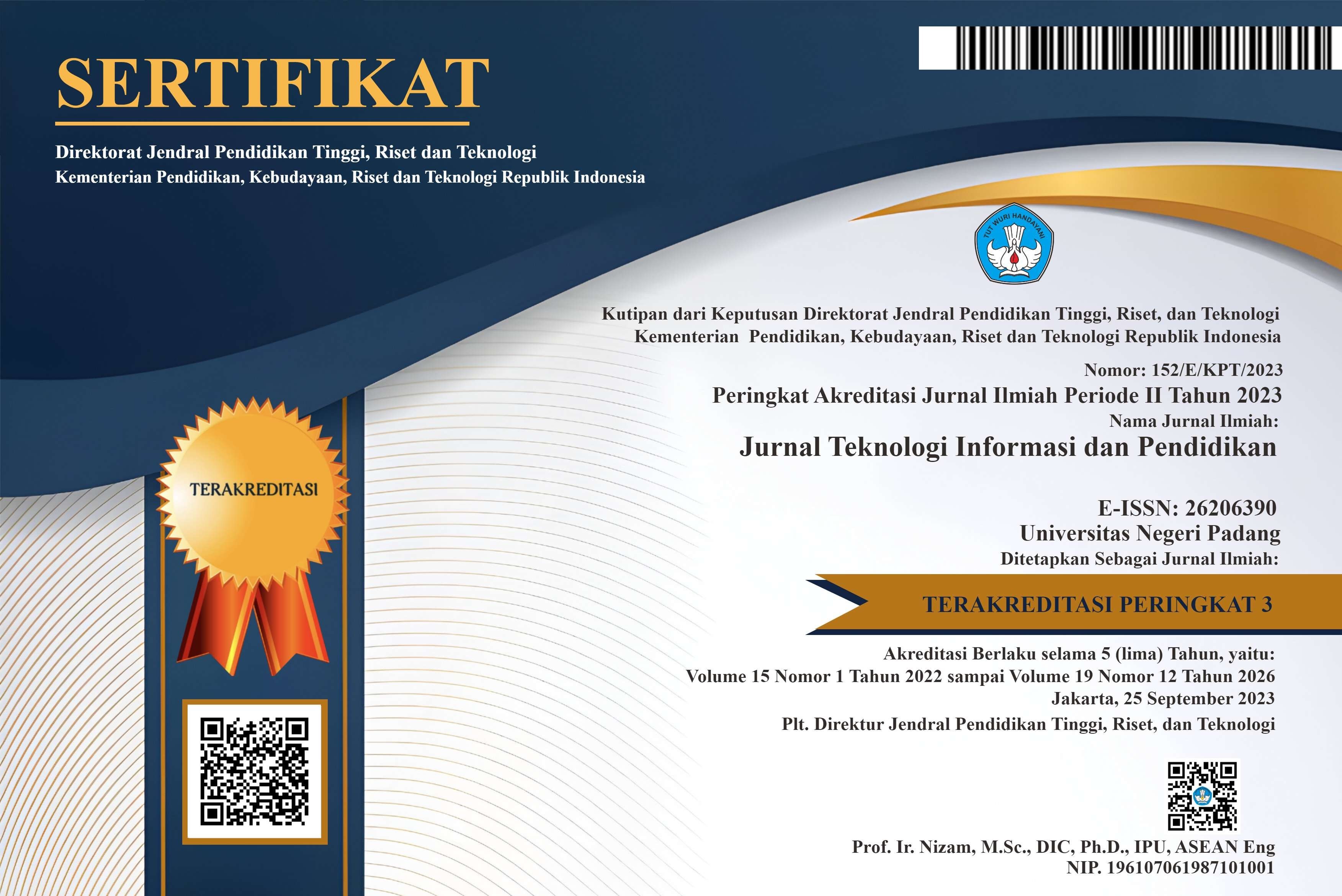Development of Web-based Tuition Payment Information System Supported by Whatsapp Notifications
DOI:
https://doi.org/10.24036/jtip.v15i2.534Keywords:
Information System, Payment, SPP, Website, WhatsAppAbstract
The use of the internet at the Cersa Pasaman Vocational High School (SMK) is still not optimal, the internet is only used for school information and there is no school financial information system. Based on observations, tuition payments at schools are still manual and make the work of the finance department slower. This type of research is research and development data retrieval is carried out to users of the web-based SPP payment information system. The research sample consisted of 30 people consisting of 5 people for a limited trial and 25 people for a wider trial taken from the principal, Administration Officer, teachers and students of SMK Cersa Pasaman, the instrument of this research was a questionnaire to determine the feasibility of the SPP payment information system. The results obtained from this research development is a web-based tuition payment information system. Based on the results of this study, it can be concluded that the developed information system is declared valid with an average value of 85.67%. The information system developed was very practical from the results of the limited trial to teachers and students with an average value of 92.60%, while the results of a wider trial obtained an average value of 92.68%. Based on the findings of this study, it was concluded that the web-based SPP payment information system at SMK Cersa Pasaman was valid, practical and feasible to use for student tuition payments.
References
J. W. Krogh, “MySQL Workbench,” in MySQL 8 Query Performance Tuning, 2020. doi: 10.1007/978-1-4842-5584-1_11.
N. Ye and T. Wu, “MySQL,” in Developing Windows-Based and Web-Enabled Information Systems, 2020. doi: 10.1201/b16616-15.
O. W. Purbo, Sriyanto, Suhendro, R. A. Aziz, and R. Herwanto, “Benchmark and comparison between hyperledger and MySQL,” Telkomnika (Telecommunication Computing Electronics and Control), vol. 18, no. 2, 2020, doi: 10.12928/TELKOMNIKA.v18i2.13743.
J. Koivisto and J. Hamari, “The rise of motivational information systems: A review of gamification research,” International Journal of Information Management, vol. 45. 2019. doi: 10.1016/j.ijinfomgt.2018.10.013.
M. Ibrahim, P. M. Ribbers, and B. Bettonvil, “Human-knowledge resources and interorganisational systems,” Information Systems Journal, vol. 22, no. 2, 2012, doi: 10.1111/j.1365-2575.2011.00377.x.
Sugiyono, Sugiyono, Metode Penelitian dan Pengembangan Pendekatan Kualitatif, Kuantitatif, dan R&D. 2015.
Sugiyono, Metode Penelitian Kuantitatif Kualitatif dan R&D. Bandung: Alfabeta CV, 2014.
Sugiyono, “Sugiyono, Metode Penelitian,” Uji Validitas, 2016.
N. Golafshani, “Understanding Reliability and Validity in Qualitative Research,” The Qualitative Report, 2015, doi: 10.46743/2160-3715/2003.1870.
P. Hayashi, G. Abib, and N. Hoppen, “Validity in qualitative research: A processual approach,” Qualitative Report, vol. 24, no. 1, 2019, doi: 10.46743/2160-3715/2019.3443.
T. Paiva, M. Ribeiro, and P. Coutinho, “R&D collaboration, competitiveness development, and open innovation in R&D,” Journal of Open Innovation: Technology, Market, and Complexity, vol. 6, no. 4, 2020, doi: 10.3390/joitmc6040116.
S. K. Laplante, H. A. Skaife, L. A. Swenson, and D. D. Wangerin, “Limits of tax regulation: Evidence from strategic R&D classification and the R&D tax credit,” Journal of Accounting and Public Policy, vol. 38, no. 2, 2019, doi: 10.1016/j.jaccpubpol.2019.02.003.
J. Han, P. Jiang, and P. R. N. Childs, “Metrics for measuring sustainable product design concepts,” Energies (Basel), vol. 14, no. 12, 2021, doi: 10.3390/en14123469.
C. K. Lo, C. H. Chen, and R. Y. Zhong, “A review of digital twin in product design and development,” Advanced Engineering Informatics, vol. 48, 2021, doi: 10.1016/j.aei.2021.101297.
K. Lee, “A systematic review on social sustainability of artificial intelligence in product design,” Sustainability (Switzerland), vol. 13, no. 5. 2021. doi: 10.3390/su13052668.
N. Salimi and J. Rezaei, “Evaluating firms’ R&D performance using best worst method,” Eval Program Plann, vol. 66, 2018, doi: 10.1016/j.evalprogplan.2017.10.002.















.png)














